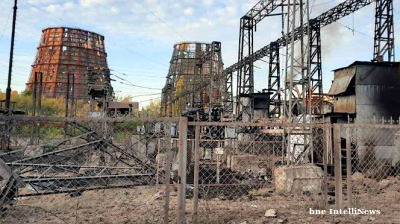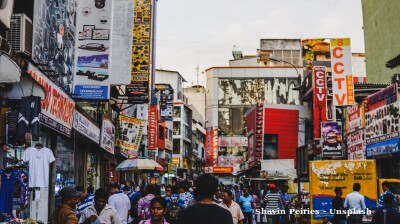Six years ago, bne IntelliNews explored the spread of fast fashion into new frontiers, highlighting how major Western fashion retailers like Inditex and H&M had largely focused on larger emerging markets, with the number of stores broadly correlating to the GDP of each country. At the time, only Romania, Southeast Europe’s largest economy, saw significant penetration from these fashion giants.
Today, while the Balkan markets remain small, international fashion chains are steadily gaining ground, with several new store openings in recent years. However, this expansion has been inconsistent, driven not only by the size or overall attractiveness of the economies, but also by the ability to work with reliable local partners and secure space in modern shopping malls. This is particularly evident in smaller countries such as Kosovo and North Macedonia.
The rise of fast fashion
Fast fashion refers to retailers like H&M, Zara, Primark, and others that have revolutionised the industry in recent decades by slashing the time it takes to move from design to store shelves. Previously, this process took months, but fast fashion companies condensed it to just weeks, producing low-cost garments in a variety of constantly changing styles. Between 2000 and 2014, the number of garments purchased in Western markets doubled, surpassing 100bn items annually.
Western fast fashion brands began entering Central and Eastern Europe in the early 2000s. Over the last two decades, they have expanded from Central Europe into the Balkans and further east into Russia and beyond. With feeding the demand for ever more clothes at the heart of their business model, these companies have been expanding geographically to sustain growth.
Expansion into emerging markets
By 2018, nearly half of Inditex’s stores – the group includes Zara as well as brands such as Bull & Bear, Bershka and Stradivarius – were in emerging markets, while H&M had about 30% of its outlets in these regions. In Eastern Europe, the number of stores generally corresponded to GDP figures, meaning the largest markets like Poland, Romania, and Russia saw the most stores. However, smaller Balkan countries, along with Central Asia (except Kazakhstan), had a much smaller presence.
One exception was Italy’s Teddy Group, the Italian parent company of Terranova. Terranova was an extremely early entrant into emerging Europe, picking newly independent Croatia as its second market for international expansion (after Spain) as early as December 1991. With Croatia already embroiled in what was to be a bloody four-year war, the first Terranova store opened in Zadar, in what one Teddy Group executive recalled was an “air of expectation and hope”. Today, Terranova is active across the region, having aggressively ventured into frontier markets like Kosovo and Moldova, and plans to open 150 stores worldwide in 2024.
Romania the top market
Six years on, Inditex’s main presence in the region, with 148 stores, was clearly Romania, which has by far the biggest economy and largest population. Inditex also had dozens of stores in some of the other larger economies – Croatia, Bulgaria and Serbia. There were fewer stores in the smaller markets such as Albania, Montenegro and North Macedonia, and none at all in Kosovo or Moldova.
Similarly H&M had 53 stores in Romania, between 10 and 20 each in Bulgaria, Croatia, Serbia and Slovenia, just a handful in the smaller markets. Indeed, H&M only recently entered Bosnia (in 2019), North Macedonia (in 2022) and Albania the following year, opting for Balfin Group’s East Gate Malls in both Skopje and Tirana. Zara and other brands from Inditex’s portfolio are also present at the Skopje East Gate Mall, alongside the first brands from Poland’s LLP to enter the country.
Primark, another Western fast fashion retailer, was relatively late. It made its entrance into Southeast Europe in 2019, opting to open first store in the region in tiny though prosperous Slovenia. It has since expanded to Romania and other emerging European markets.
Turkish competition
As Western retailers moved east, they encountered stiff competition from Turkish fast fashion chains like Koton and LC Waikiki, which were early movers into several emerging markets, particularly those with cultural or historical ties to Turkey. LC Waikiki's appeal in majority Muslim countries, with its modest clothing options, gave it a distinct advantage in markets like the Balkans.
While Koton and LC Waikiki struggled in more affluent Western European markets due to higher costs and intense competition, they secured strong positions in Southeast Europe and Eurasia.
Looking at the LC Waikiki stores in Southeast Europe, the retailer has 45 in Romania, but 32 in Bosnia – a market less than one tenth of the size.
Post-communist retail transformation
The arrival of Western fast fashion was just the latest chapter in the retail evolution of post-communist Eastern Europe and Eurasia. Following the fall of communism, the region experienced a flood of cheap imports from China and Turkey, often brought in by small traders. Eventually, large wholesale bazaars dominated the landscape. Before modern malls and brand-name stores arrived, wealthier Eastern Europeans would fly to Western capitals to shop, while the majority of consumers struggled to keep up with Western fashion trends.
Today, international brands have become ubiquitous in the region’s EU member states and are making headway in the Western Balkans. As incomes rise, these markets are becoming more attractive to global retailers.
Recent geopolitical shifts have also had an impact. In the wake of Russia’s invasion of Ukraine, many Western retailers pulled out of the Russian market, which had been a key focus for companies like H&M and Inditex. Both brands closed hundreds of stores in Russia, transferring some to other operators.
As brick-and-mortar stores continue to expand across the Balkans and Eurasia, online retailers are also making inroads. The pandemic accelerated this trend, with Chinese giants like Shein, Temu and Aliexpress aggressively expanding their presence in emerging markets. Emerging Europe also has a homegrown online retail champion; Lithuania-born second-hand marketplace Vinted.
Accordingly, fast fashion, both online and in stores, continues to evolve, and is increasingly shaping the retail landscape in the Balkans.
Features

Ambition, access and acceleration – Uzbekistan’s Startup Garage opens free academy for entrepreneurship
Aim is to train 50,000 young founders by 2030.

Ukraine’s growing energy crisis promises a cold and dark winter
Since the summer, Kyiv has changed tactics. Given the almost complete failure of Western oil sanctions to curb Russian oil exports, it has been targeting Russian oil refineries. The Kremlin has struck back, targeting Ukraine's power system.

Russia, China sign off on Northern Route shipping deal to slash global freight times
Russia and China have signed a landmark agreement to develop and commercialise the Northern Sea Route (NSR), after Beijing tested the route last month, that could slash Europe-Asia cargo transit times and challenge the primacy of the Suez Canal.

Sri Lanka’s economic escape
Sri Lanka’s recovery over the past year reads like a narrow escape rendered into a cautious, albeit unfinished success story.




